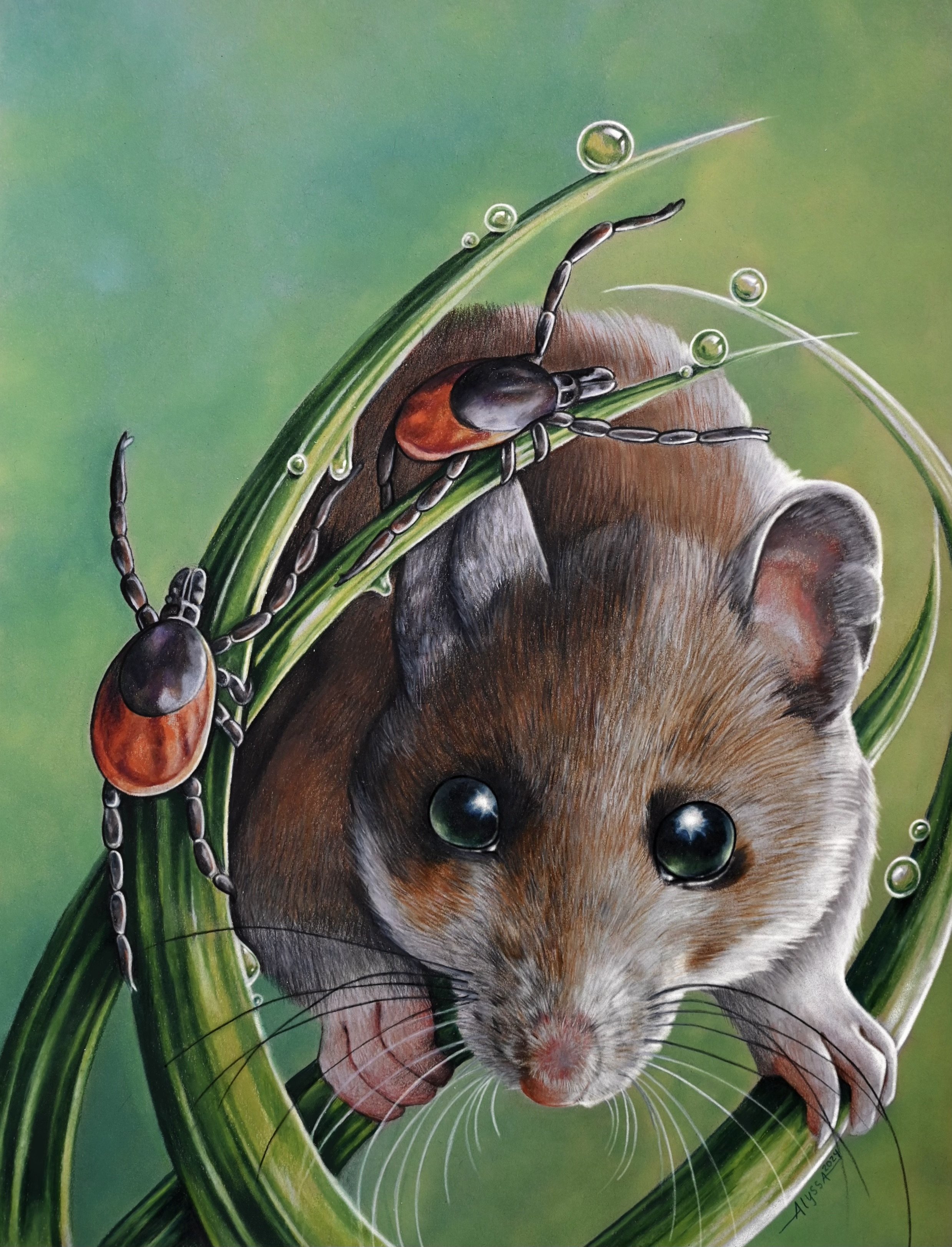Secret Life of Lyme
Prismacolor Pencil and Pan Pastels 9” X 12”, 2024
This piece was created for publication in the Maine Journal of Conservation and Sustainability in 2024. It highlights the significant public health threat posed by ticks and tick-borne diseases in Maine, with a particular focus on the white-footed mouse (Peromyscus leucopus), the primary reservoir for the bacteria that cause Lyme disease. This illustration depicts the interaction between the Lyme disease vector, the black-legged tick (Ixodes scapularis), and the white-footed mouse. Black-legged ticks that feed on infected white-footed mice are likely to become infected themselves, making them capable of transmitting Lyme disease to people during their next blood meal. To find a host, ticks engage in a behavior called “questing” in which they patiently wait in the vegetation, extending their first pair of legs. Once the host brushes up against it, the tick promptly climbs onto the host, eventually finding a spot to feed. Being aware of tick-borne pathogens and implementing necessary measures when venturing into tick habitats, particularly in the woods of Maine, is crucial. Regularly conducting tick checks and wearing the appropriate outdoor attire to prevent the risk of contracting a tick-borne illness is essential. For more information, visit https://umaine.edu/spire/2024/04/05/marini/
